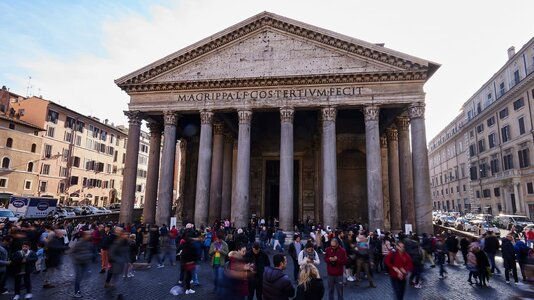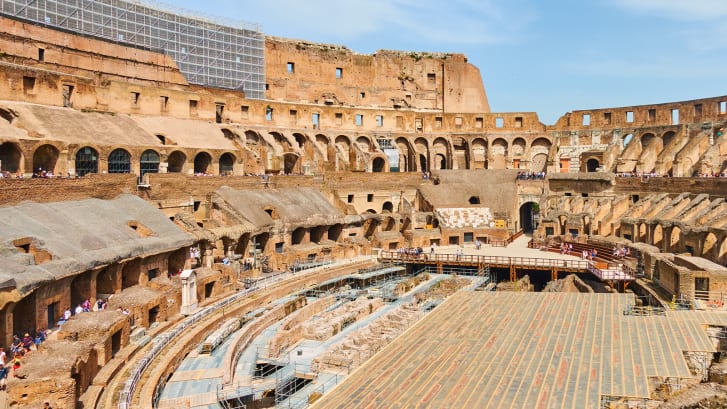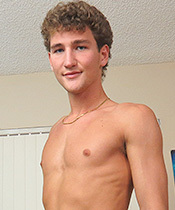"And The Walls Came Tumbling Down"
I'll preface this by saying that I'm a layman who is not an engineer, an architect or a physicist. So these are just my own thoughts and ponderings without any claim to expert knowledge of the subject. If someone with greater scientific knowledge than I wishes to dispute my hypothesis, I will not be offended. I have no ego invested here. This is just conversation.
When I saw the part of the video about the poorly designed pedestrian bridge, and how the marching of armies and regular peoples' walking coordinated in a gait that is "in step"...and how that synchronized marching and walking can build up a dangerous and destructive amount of energy on man-made structures... My thoughts went immediately to the Battle of Jericho. While I don't ever presume to speak for God... LOL For those who are more comfortable trying to explain some "miracles" here on Earth using a more explainable scientific method and methodology, perhaps God's advice to the Israelites makes much more sense now. Perhaps even the blowing of the horns in synch might have hit yet another destructive frequency on an already weakened wall. If ones takes into consideration that the army marched probably "in step" around the walls for 7 days, maybe that actually did succeed (in a physics based and architecturally based explainable way) in weakening the foundations until they finally collapsed.
***********************************************
[From Wiki:]
The Book of Joshua tells of the campaigns of the Israelites in central, southern and northern Canaan, the destruction of their enemies, and the division of the land among the Twelve Tribes of Israel.
Joshua sent two spies into the Jericho. Rahab, a local prostitute, assisted them and provided them with information, and the spies promised her that no one in her house would be slain. They asked her to mark her house with a scarlet thread.
The people of Jericho were aware of the intentions of the people of Israel and took steps. After crossing the Jordan, the king of Jericho ordered that the gates of the walls be closed.
God commanded Joshua to go around the walls of Jericho for six days, once every day, and seven times on the seventh day. God commanded the city to be attacked by seven priests blowing trumpets, with the Ark of the Covenant in front of them and all the people behind the Ark of the Covenant. They encircled the wall of Jericho once a day for the first six days, and then encircled the city seven times on the seventh day. After the sound of the shofar sounded a great blow, the Israelites cheered and the city walls fell beneath them.
Following God's law they killed every man and woman of every age, as well as the oxen, sheep, and donkeys. Only Rahab, her parents, brothers and all "those who belonged to her" were spared.
Source: https://en.wikipedia.org/wiki/Battle_of_Jericho
I'll preface this by saying that I'm a layman who is not an engineer, an architect or a physicist. So these are just my own thoughts and ponderings without any claim to expert knowledge of the subject. If someone with greater scientific knowledge than I wishes to dispute my hypothesis, I will not be offended. I have no ego invested here. This is just conversation.
When I saw the part of the video about the poorly designed pedestrian bridge, and how the marching of armies and regular peoples' walking coordinated in a gait that is "in step"...and how that synchronized marching and walking can build up a dangerous and destructive amount of energy on man-made structures... My thoughts went immediately to the Battle of Jericho. While I don't ever presume to speak for God... LOL For those who are more comfortable trying to explain some "miracles" here on Earth using a more explainable scientific method and methodology, perhaps God's advice to the Israelites makes much more sense now. Perhaps even the blowing of the horns in synch might have hit yet another destructive frequency on an already weakened wall. If ones takes into consideration that the army marched probably "in step" around the walls for 7 days, maybe that actually did succeed (in a physics based and architecturally based explainable way) in weakening the foundations until they finally collapsed.
***********************************************
[From Wiki:]
The Book of Joshua tells of the campaigns of the Israelites in central, southern and northern Canaan, the destruction of their enemies, and the division of the land among the Twelve Tribes of Israel.
Joshua sent two spies into the Jericho. Rahab, a local prostitute, assisted them and provided them with information, and the spies promised her that no one in her house would be slain. They asked her to mark her house with a scarlet thread.
The people of Jericho were aware of the intentions of the people of Israel and took steps. After crossing the Jordan, the king of Jericho ordered that the gates of the walls be closed.
God commanded Joshua to go around the walls of Jericho for six days, once every day, and seven times on the seventh day. God commanded the city to be attacked by seven priests blowing trumpets, with the Ark of the Covenant in front of them and all the people behind the Ark of the Covenant. They encircled the wall of Jericho once a day for the first six days, and then encircled the city seven times on the seventh day. After the sound of the shofar sounded a great blow, the Israelites cheered and the city walls fell beneath them.
Following God's law they killed every man and woman of every age, as well as the oxen, sheep, and donkeys. Only Rahab, her parents, brothers and all "those who belonged to her" were spared.
Source: https://en.wikipedia.org/wiki/Battle_of_Jericho











